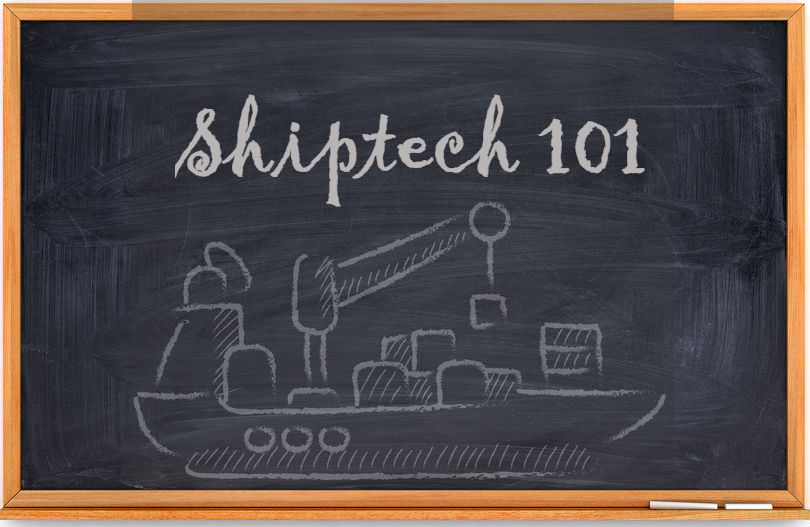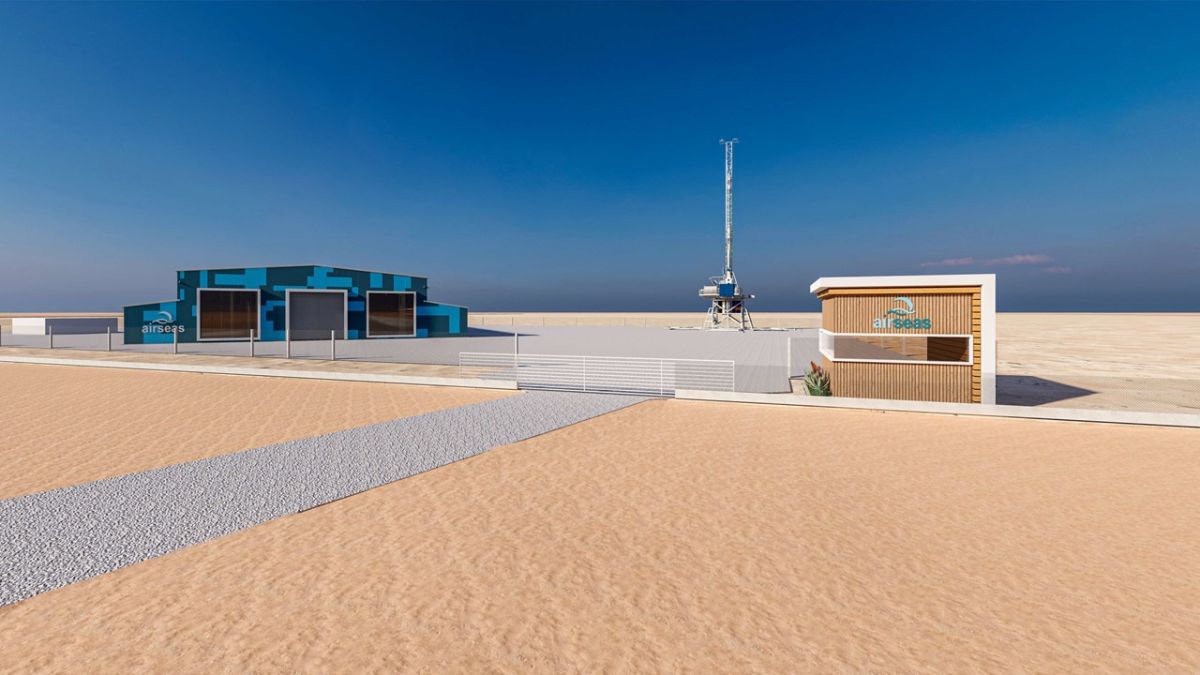PART THREE of Shiptech 101 looks at new solutions to meet established challenges. Pending and current regulations on emissions (CO2, NOx and SOx) and discharges necessitate alternative methods of propulsion and innovative technologies to reduce emissions, lower fuel consumption and operate with lower environmental impact.

There are a number of exciting technologies and projects that are either in development or newly available on the market to shipowners and operators looking to propel more efficient, less polluting ships. A global sulphur cap of 0.5% in 2020 will drive shipowners and operators to explore methods of reducing emissions while keeping operational costs low and efficient. Although the future technologies discussed here do not directly reduce sulphur emissions, they can be used to lower fuel consumption and increase energy efficiency as part of an overall strategy.
While the technologies in development today are new, the concepts behind them are often not. Wind propulsion for instance is not a new concept but using the wind to power large merchant vessels is not something that would have been done 100 years ago.
New understanding of materials, processes and innovative advances has led to the development of ‘future technologies’ – technologies that harness natural power and renewable sources to fuel ship operations.
Marine batteries
The development of the first electric battery came in 1800 by Italian physicist, Alessandro Volta and shortly after the fuel cell by William Grove, a chemist, physicist and lawyer in 1839. Electric boats were also pioneered in the 1800s, but the application of this technology to larger marine vessels is much more recent.
By switching from conventional fuel to lithium-ion batteries and using renewable energy sources such as shore power when docked, ships can significantly limit environmental and health impacts to port residents. Batteries are often designed to recharge themselves once the ship has left the port and is sailing on bunker fuel.

At the current time, tugs are the most likely users of batteries as they operate largely within ports and at very low loads. And when not in operation, the tug can connect itself to shore power to recharge.
Right: Corvus energy storage system.
Table 1. Marine batteries and power cells.
Fuel cells
Fuel cells offer greater endurance over batteries. They use hydrogen, LNG, methanol, or diesel to turn into hydrogen for power. Anodes and cathodes convert chemical energy to electrical power for continuous use in ships. Due to their low cost and high efficiency and the ability to integrate them well for marine applications, popularity is growing in them as a resource for replacing the combustion engine in the long run.
Batteries and fuel cells solutions are available but at the current time they are not robust enough for wide scale application to the maritime industry. However, they are advancing all the time and t here are a number of projects that aim to understand and development their applications. Link to pdf table.
here are a number of projects that aim to understand and development their applications. Link to pdf table.
ABB offers an onboard grid solution to provide electrical power using a DC between the thrusters and propulsors and other onboard consumers. The first onboard DC grid system was delivered to the Dina Star, owned by Myklebusthaug Management in Norway in 2013.
Left: Convion fuel cell.
ABB onboard DC grid explained.
Table 2. Fuel cells and Table 3. Fuel cell projects
Wind assisted propulsion
Harnessing wind power to propel maritime vessels has been done since 1300 BC when the first sailboat was invented. It was not until 1924 that German engineer and inventor of the Flettner rotor, Anton Flettner, used the magnus effect to build a ship that could propel itself. While the magnus effect was abandoned for use in ships due to its inefficiency at the time, recently it has been trialled by shipping companies to reduce fuel consumption, and emissions.
The Magnus effect explained.
Wind assisted propulsion includes the use of wingsails, soft sails, kites or flettner rotors. These technologies harness the power of the wind and generate a forward thrust to propel the ship. Combining this power with the ship’s engine reduces the power required to achieve a given speed, which reduces fuel consumption, emissions, and overall costs. A given ship speed can be achieved with the same engine power.

Above: Norsepower rotor sail solution.
There are a variety of wind assisted propulsion technologies that are in development or have been trialled, however, Norsepower’s rotor sail solution is the only technology to demonstrate commercial orders. It is also supported by European funds.
Flettner rotor explained.
Other wind assisted propulsion concepts have been developed by companies such as US-based TankerProa and Japan-based Eco Marine Power, but at the current time their concepts are just that. However, the increasing number of companies developing concepts for wind propulsion indicates a strong level of interest in using renewable energy to lower fuel consumption. As more companies invest in developing methods for wind driven propulsion, concepts are more likely to become realities. It is possible that increased use of wind power could reduce the quantity of diesel fuel required and help both lower fuel consumption and reduce overall emissions.
TankerProa’s wind assisted propulsion concept was trialled in 2013 on a Massachusetts Maritime Academy model tanker vessel. The technology propelled the vessel at 4 knots in 5 knot winds with the engines turned off. The concept is shown below.
Table 4. Wind assisted propulsion
Solar power
Energy from the sun can be harnessed to assist with the production of energy on a ship. The ability for solar power to impact energy consumption on a ship is very minimal. However, it does show that solar power can and is being utilised at the small scale, and indicates potential for it to be scaled up and used at the commercial level in the next few decades.
Ports are also exploring solar power to reduce carbon emissions and increase environmental health. India has invested US $104 million into solar and wind power projects at twelve of its ports. Significant investment such as this indicates the prospects the maritime industry sees in harnessing renewable energy sources.
Eco Marine Power’s solar powered ship concept

Air lubrication
Air lubrication technology reduces resistance between the ship’s hull and seawater by implementing a layer of air bubbles between the two to lubricate the hull-water contact area. According to DNV GL, by 2025 more ships will operate with air lubrication technology to significantly improve efficiency.
Savings of 10-15% can be achieved according to Mitsubishi.
Table 5. Air lubrication technologies
Hydrogen carrier ships
A growing interest in building ships to transport hydrogen indicates a strengthening chain in the alternative fuels sector. Increasing transport of hydrogen opens the door to its use within the maritime sector as letters of intent for building hydrogen carriers are signed.
Hydrogen can be generated from different sources such as wind, biomass or natural gas and is used in some fuel cells.
Kawasaki Heavy Industries has been involved in the development of a demonstration vessel to establish a supply chain for the transportation of hydrogen. It would see the transportation of hydrogen from its production in Australia be transported by sea to Japan.

Last year Iwatani, Electric Power Development (J-Power) and Shell Japan teamed up with Kawasaki to develop the CO2-free Hydrogen Energy Supply-Chain Technology Research Association (HySTRA).
Right: Kawasaki’s hydrogen carrier concept.
Although there are not as many projects to date based around hydrogen powered or hydrogen carriers, there is evidence that its use in the maritime industry is growing. Letters of Intent to pursue hydrogen as a fuel are being signed – PowerCell signed one with Nel ASA to pursue hydrogen opportunities in February this year.
Bristol’s hydrogen-powered ferry has operated successfully at the small scale, indicating that there is potential for hydrogen-powered vessels to be scaled up in the future.
Fathom-News
editor@fathom-mi.com

































